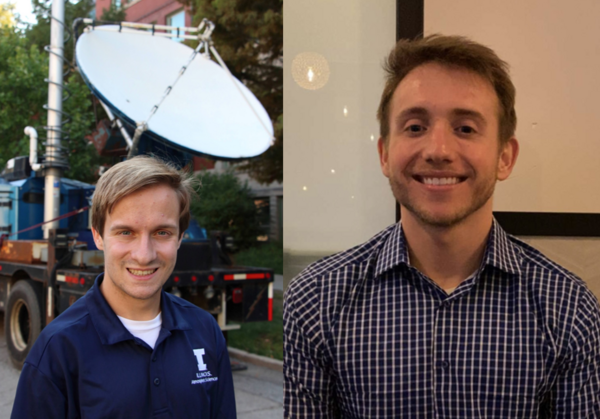
Seminar Speakers: CliMAS Graduate Students, Matthew Graber and Kyle Killion
- Event Type
- Seminar/Symposium
- Sponsor
- Professor Deanna Hence
- Location
- 2079 NHB
- Virtual
- Join online
- Date
- Feb 13, 2024 3:30 - 5:00 pm
- Views
- 78
Kyle's Presentation:
Quantification of Mechanisms for Damaging Wind Generation in Simulated Derecho Events
Damaging winds generated by non-tornadic thunderstorms are responsible for property and crop losses comparable to or greater than tornadoes. The number of annual severe-thunderstorm wind reports exceeds the number of annual tornado reports by at least an order of magnitude, yet tornadoes have been the focus of much of the research in the U.S. Four separate derecho events, each representing a different meteorological environment, geographic location, and season, were simulated with the Weather Research and Forecasting (WRF) model to investigate wind-generating mechanisms in the associated long-lasting, intense mesoscale convective systems (MCS). High-resolution model output was used to objectively identify severe and potentially damaging winds and their associated generating mechanisms. Rear-inflow jets (RIJ) were the most frequent generator of severe and potentially damaging winds in the derecho events and were attributed to the most observed reports. Downbursts (DB) and Mesovortices (MV) generated severe and potentially damaging winds less frequently and were attributed to fewer reports, but produced stronger winds on average. MVs were the strongest solo mechanism, on average, and could produce even stronger winds when combined with a RIJ or DB. These results suggest that RIJs likely generate most severe and/or damaging winds in derecho events but not the most intense winds, which are most likely to be generated by MV-related mechanisms.
Matthew's Presentation:
The Regionality and Seasonality of Tornado Trends in the United States and Link to Weather Regimes
Continued efforts to build human resilience to the impacts of tornadoes require updated knowledge of tornado occurrences as well as how their occurrence characteristics may be changing in time and varying by region. We have temporally and geospatially disaggregated annual tornado reports in the United States and revealed that significant, long-term decreases in tornado days from 1960 to 2022 have occurred over the months of June through August, primarily within the Southern Great Plains. In contrast, long-term increases in days of tornado outbreaks have occurred over this period, particularly within the Southeast U.S. and during warm- as well as cool-season months. There are indications that these dichotomous linear trends in tornado days and tornado outbreaks have relaxed over the most recent decade.
Such resilience efforts should also benefit from efforts to better understand the multi-year to decadal variability and predictability of tornado activity. We are using the concept of weather regimes (WRs) toward that end. From five WRs based on 500-hPa geopotential height from ERA5 reanalysis, we find indications that warm season WRs, and their persistence have modulating effects on the probability of tornadoes at a given time. Two of the WRs are found to account for 46.5% of the warm-season tornado days over the period 1960-2022. Moving forward, WRs will provide a path for the development of a near-term tornado predictive model.